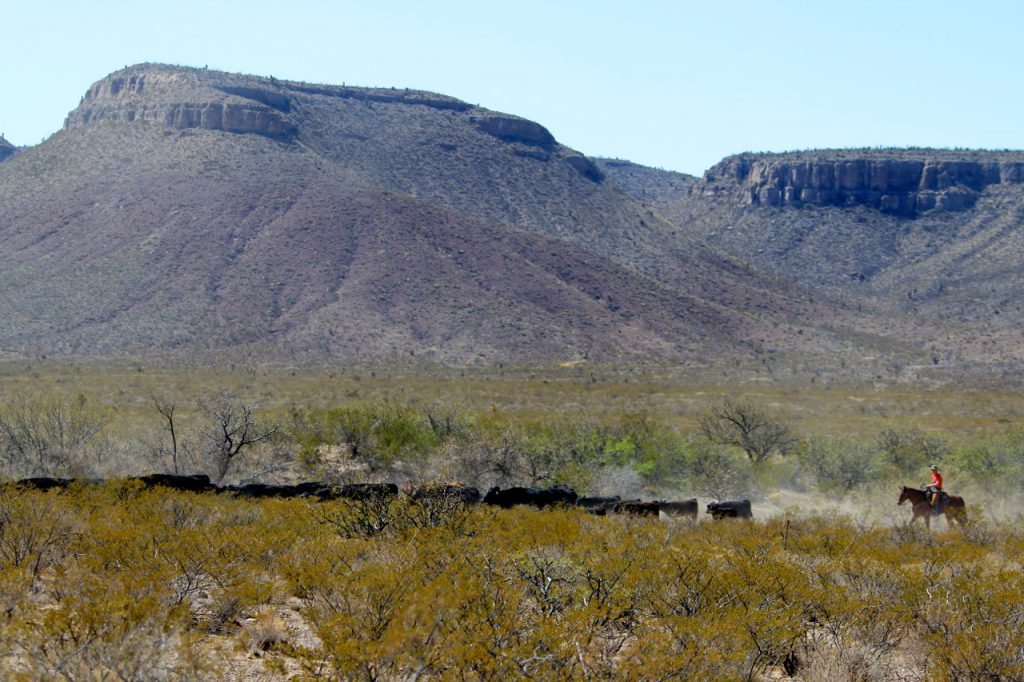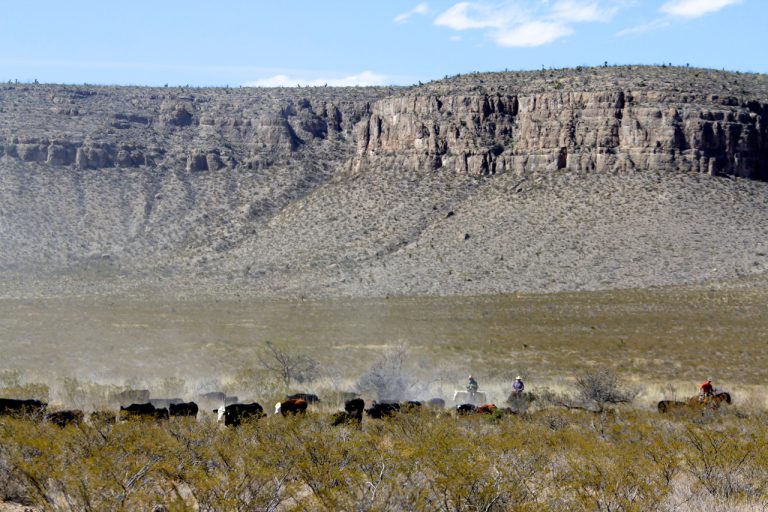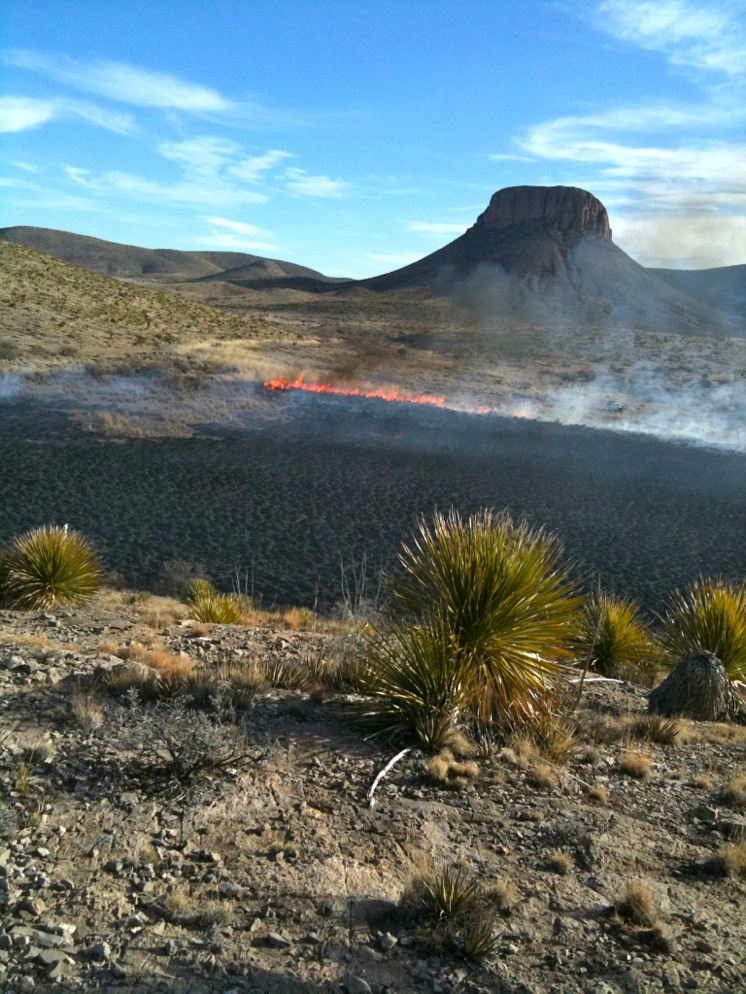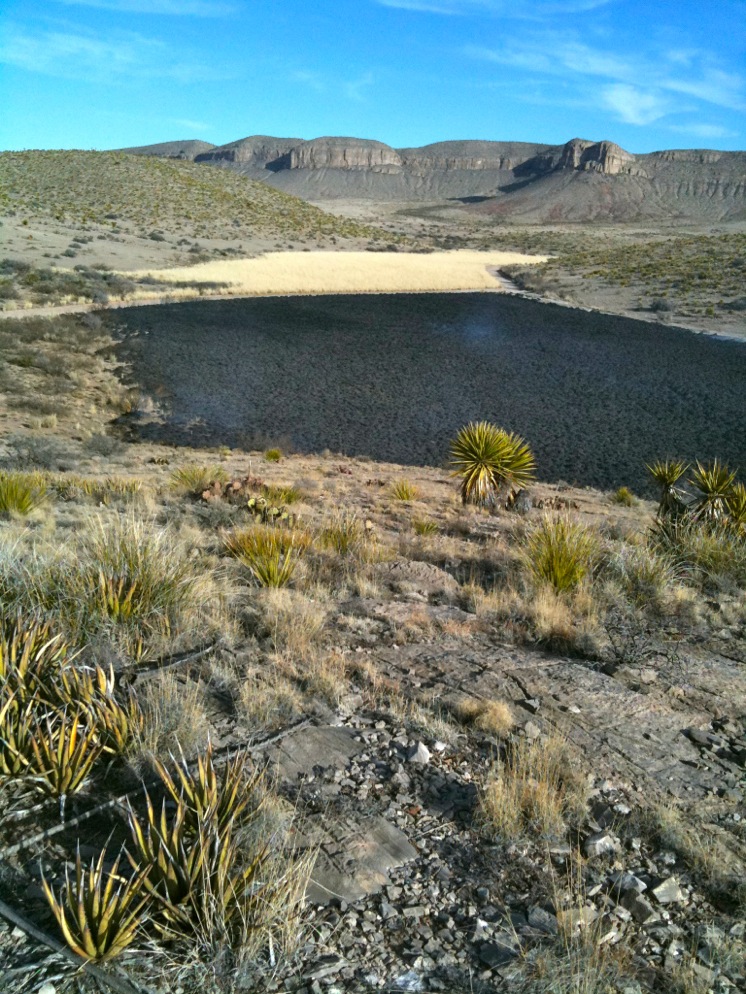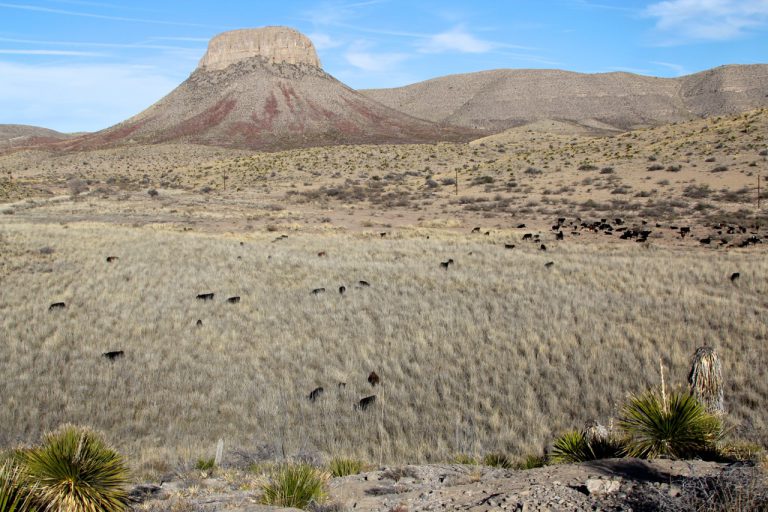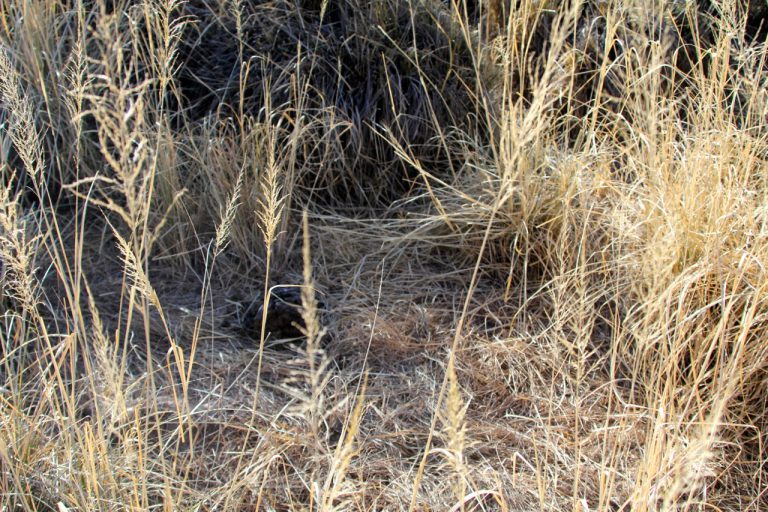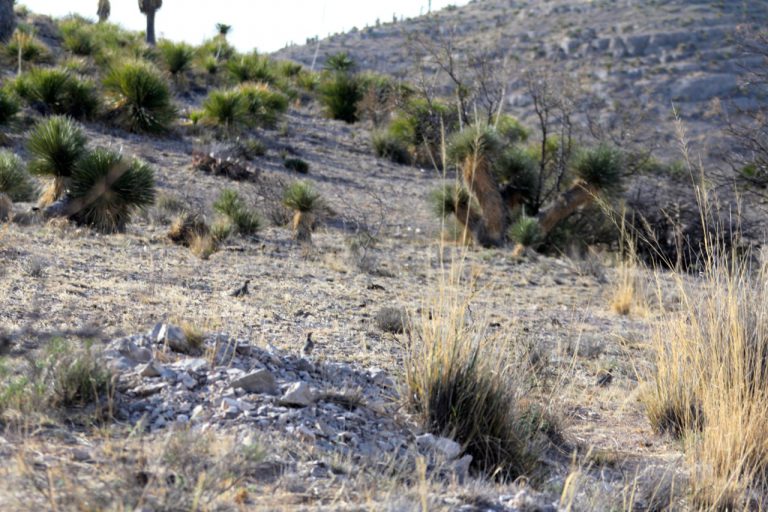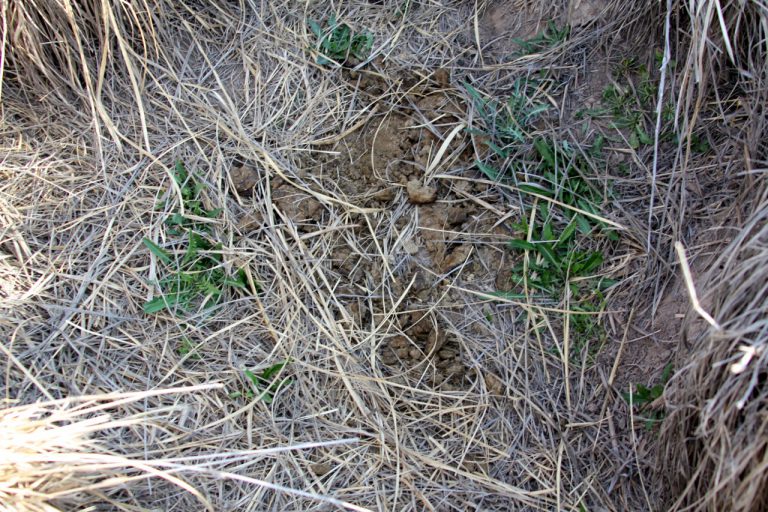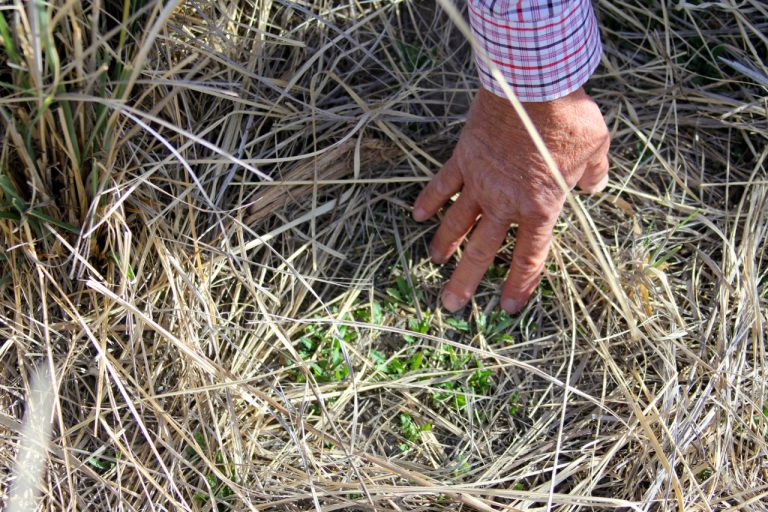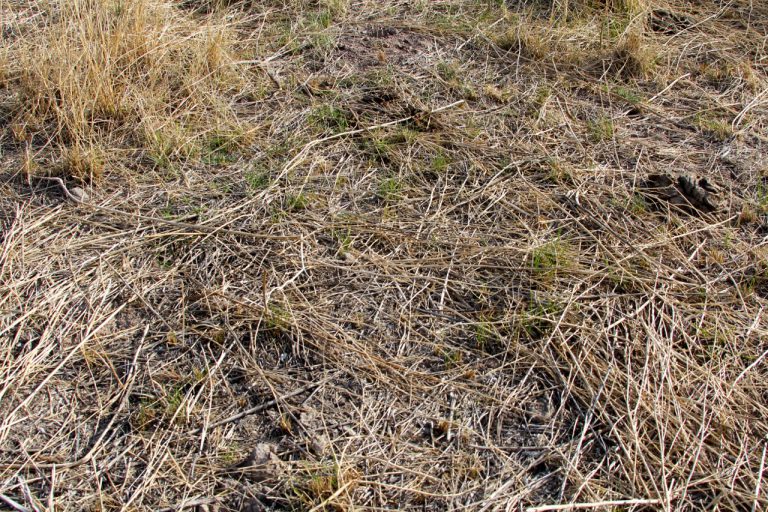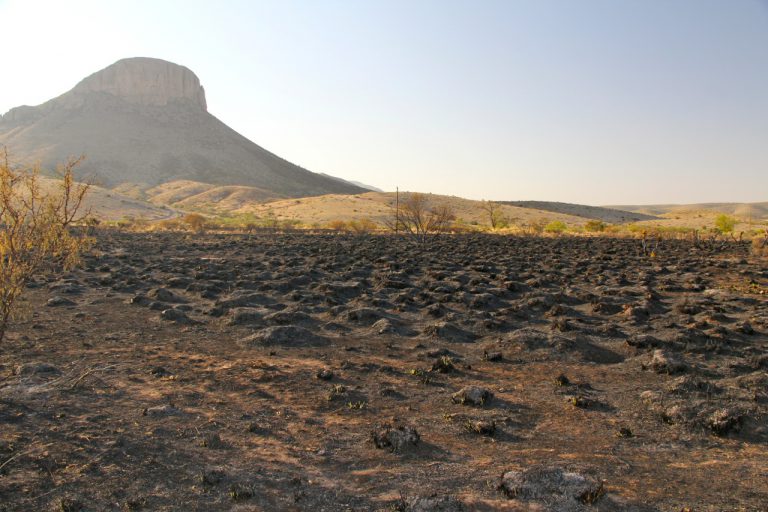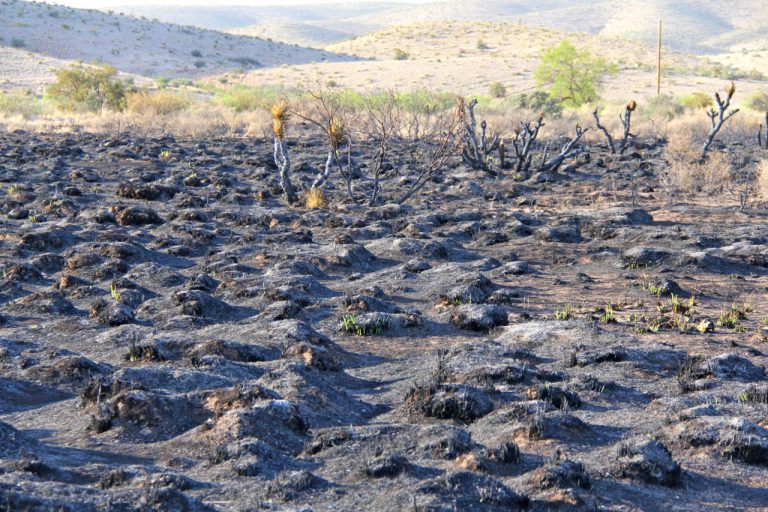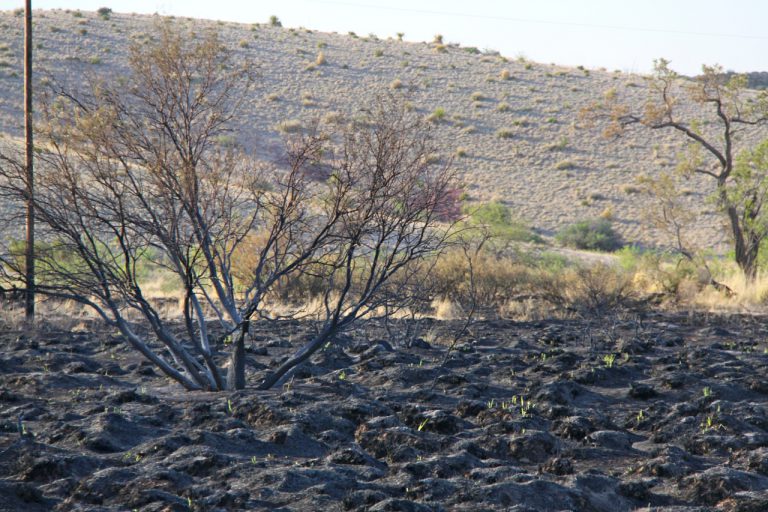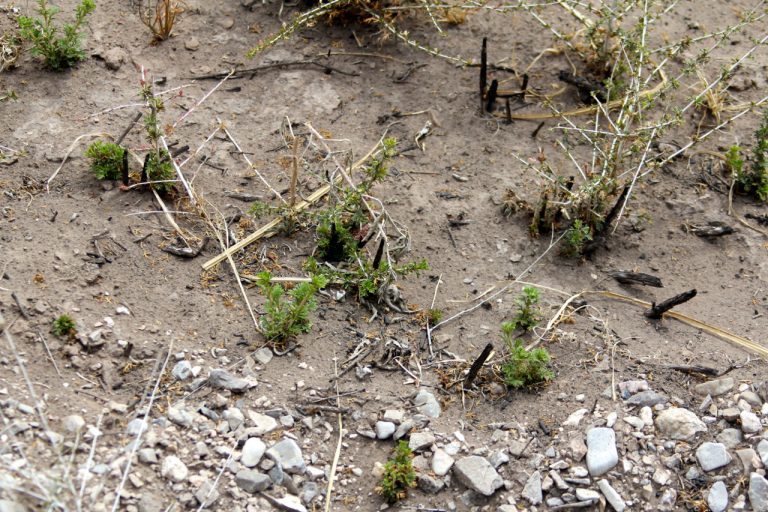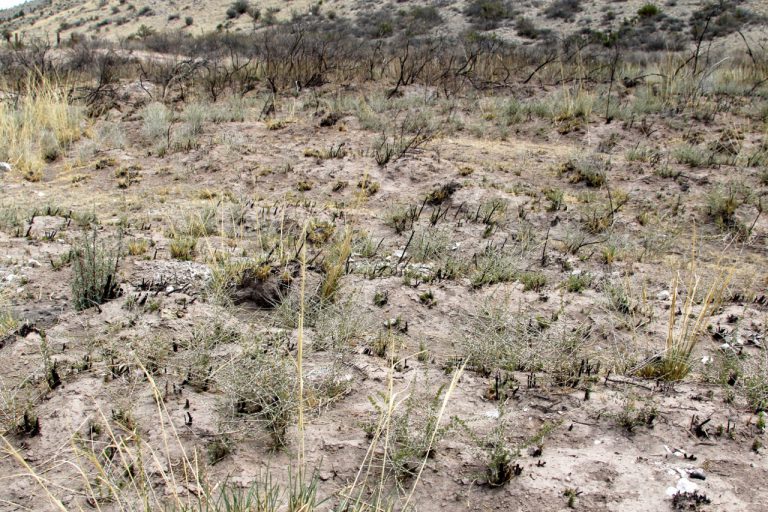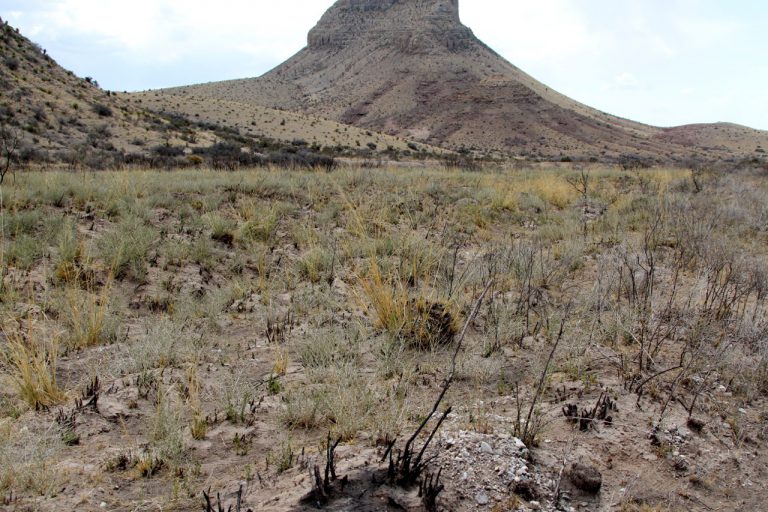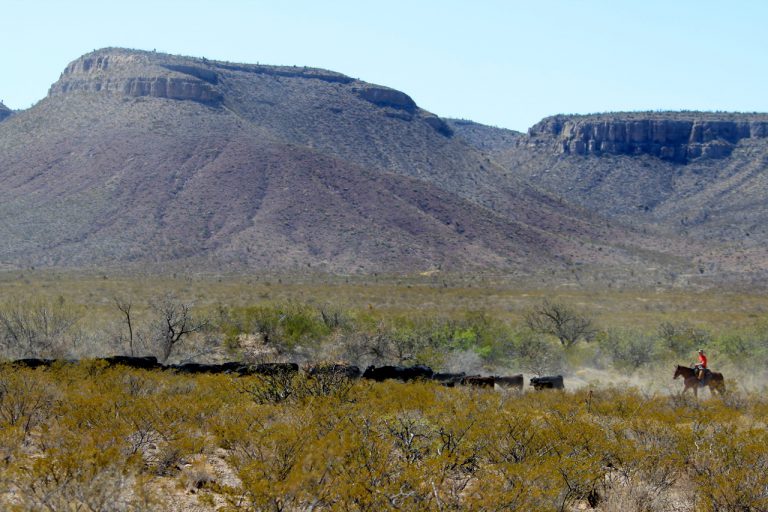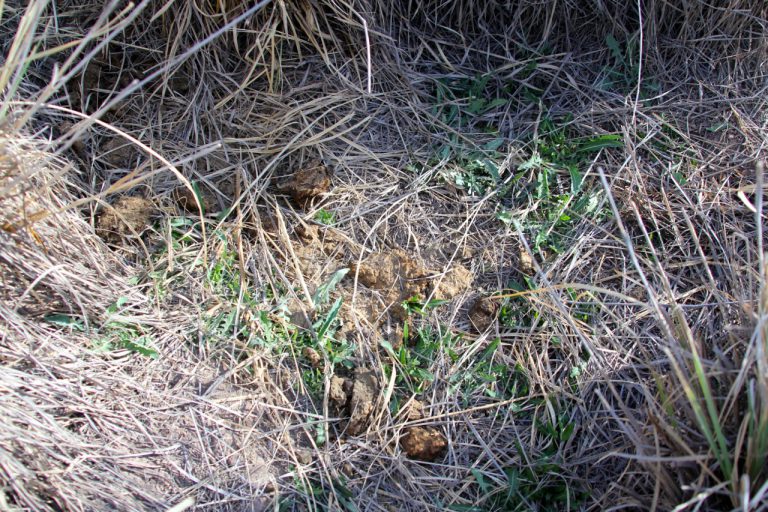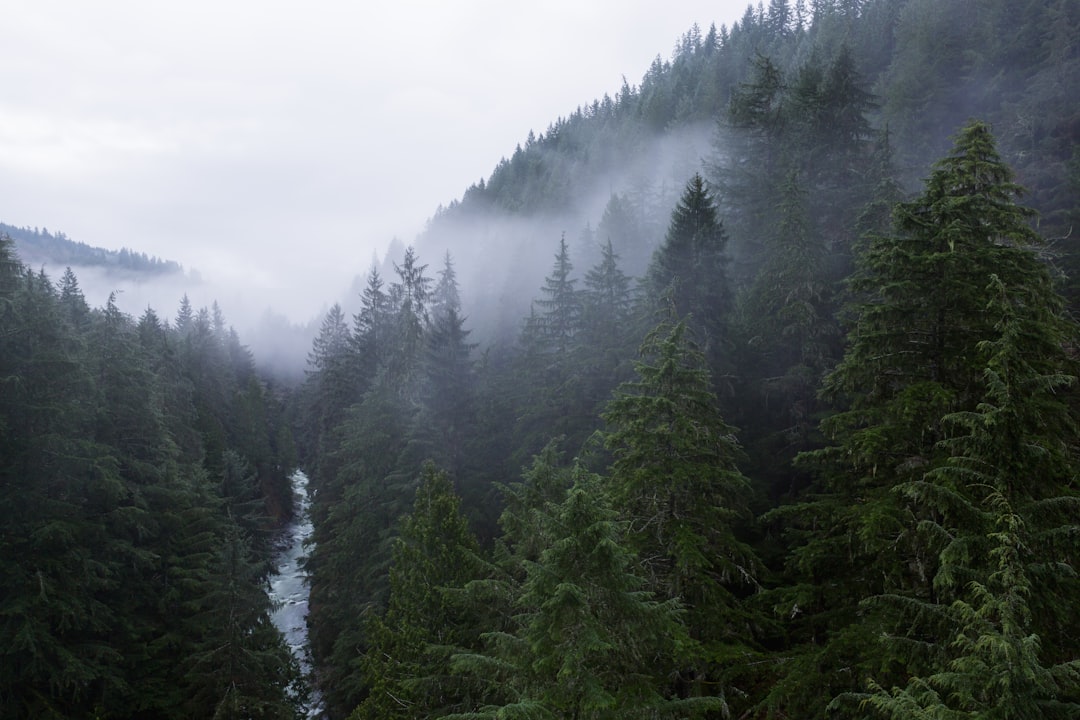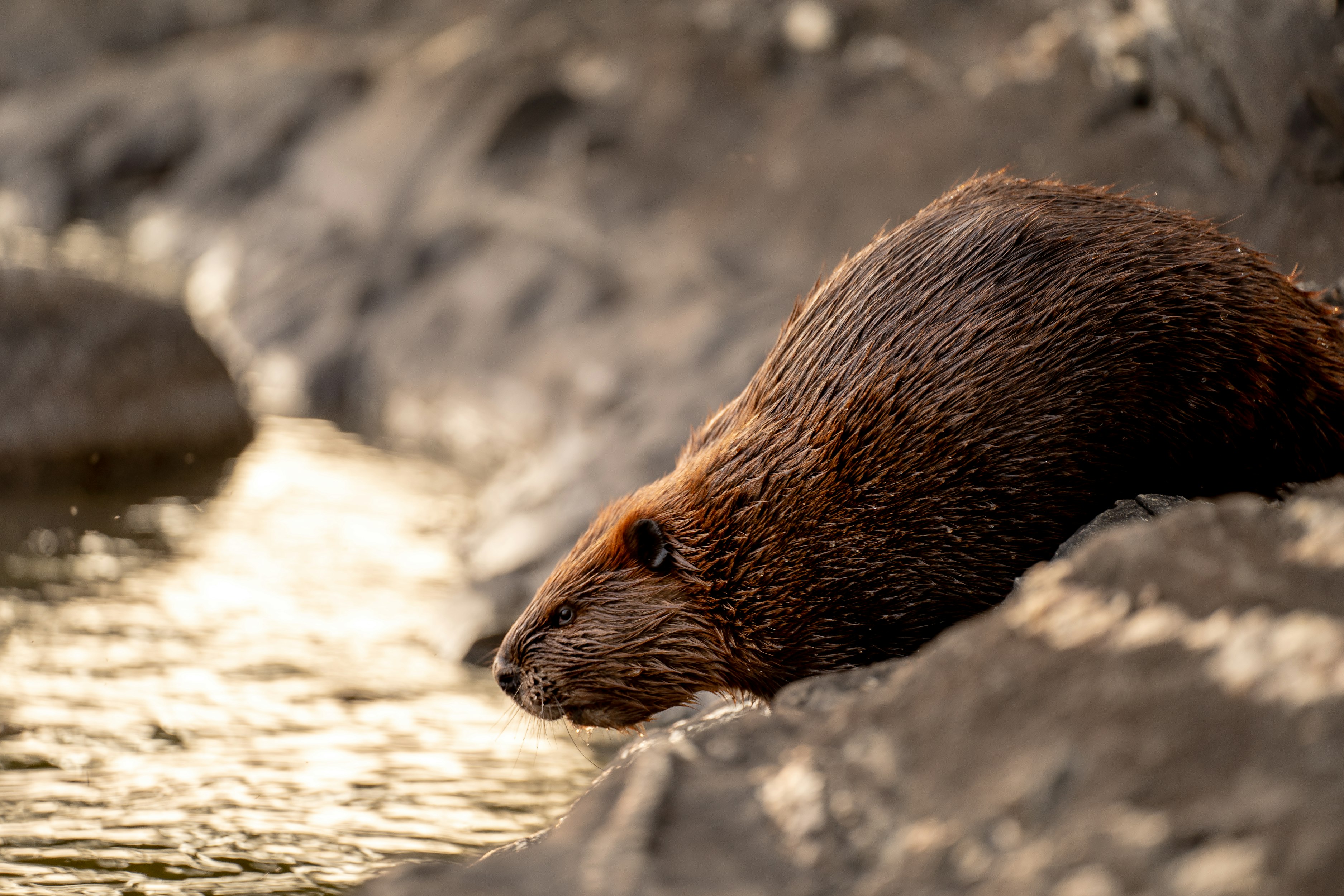Cows and Quail (Food)
Circle Ranch is in the high-mountain deserts of far-West Texas, where we get about 11 inches of rainfall annually. Generally, our lower country like this desert is very dry, but the ranch has big draws that run throughout it which create unique ecosystems in a very dry area. Much of the grass that is growing in this draw, photographed with a telephoto lens from a high mountain vantage point, is the giant sacaton grass. Sacaton is considered an inferior pasture grass based on the theory that cattle don’t like it.
Here is a picture of part of our Circle Ranch herd being moved down into that draw, in mid-April 2013. The purpose is to get about 8 weeks of grazing in the draw to stimulate the growth of grasses and especially weeds (forbs) which are an important food for wildlife.
Like many ranchers we have previously considered that sacaton was unusable and ungrazable. Here is a prescribed burn in a sacaton field which we did about three years ago.
There is a road through the middle of this sacaton field and you can see where we burned and where the road acted as a firebreak. After the fire, we got very vigorous regrowth, but as far as I could tell there was no benefit for wildlife except that elk and deer will use this field to hide calves and fawns.
However, this year we had a cattle herd that came from our friends the Bakers who ranch the Eagle Mountains 20 miles south of Circle. These cattle have grown up in our area and, although Earl and Sylvia say the cattle have never been around sacaton they took right to it. Here is part of the herd grazing in mature regrowth sacaton. This grass was so thick that you could not walk 10 feet into it and there was nothing growing on the ground beneath or between the plants. The plant material is so old that it is turning gray and blue, a sign of oxidation, and a troubling condition.
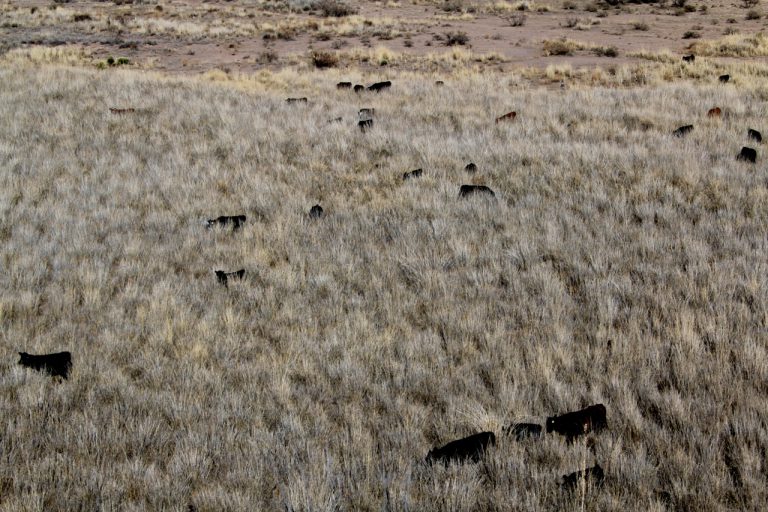 Here is a close up of the same animals. Note the gray-blue tone which indicates oxidation. The cattle are grazing the base of the sacaton plant, which is still green and in the process they are knocking down that dead plant material onto the ground where it forms mulch (litter), which, as every gardener knows, is necessary to hold ground moisture.
Here is a close up of the same animals. Note the gray-blue tone which indicates oxidation. The cattle are grazing the base of the sacaton plant, which is still green and in the process they are knocking down that dead plant material onto the ground where it forms mulch (litter), which, as every gardener knows, is necessary to hold ground moisture.
Right after the cattle passed through I took some pictures of typical spots. Here’s one: You can see the seeds of the mature sacaton, fresh dung and lots of crushed old material down on the ground acting as mulch.
On the weekend of April 13, we were driving along this sacaton field when we noticed a covey of Gamble’s quail crossing the road and headed up the hillside. So we went down to the field to see what had caused the quail to be in the sacaton during feeding period.
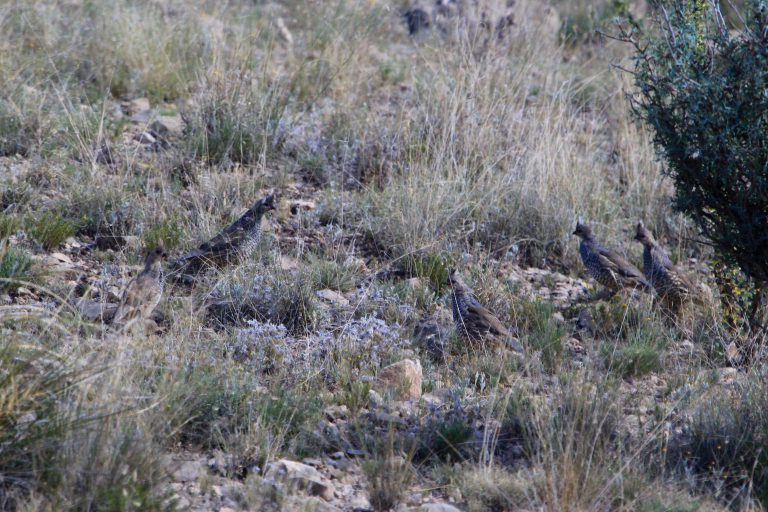
We found weeds coming up between the plants where the cattle had grazed.
In the sacaton field, there are literally countless spots where you see the combination of dung and litter that has prompted fresh weeds to come up
To the left of Guy’s hand you can see the fresh growth in the sacaton, the litter and the weed bloom.
In the more open areas, any place that has significant amounts of litter in combination with dung, is experiencing a flush of new grass and weeds.
This is critical to quail because the tender green growth from new weeds provides water and nutrients. These weeds host bugs in the spring and summer, which provide protein necessary for the hens to produce eggs and for the chicks to grow. Quail prefer bugs over seeds when bugs are available, but these same weeds, when they mature, produce the seeds on which quail survive all winter. The sacaton plants give these animals shade from the sun; a dry spot in a rain, which will chill and kill chicks; cover from aerial predators (their worst enemies) and ground predators; and nesting cover. In winter, these plants shelter quail from snow and cold. But they must be able to move through it.
As quail managers, we are trying to create all of these things for our quail. Sacaton is usually not good habitat for quail, except along the margins, because quail habitat must contain all of the things that I have mentioned above, all in an area that might be a daily range to be useful. So, just as a chain is no stronger than its weakest link, an area that has everything but food is not acceptable to quail.
Last summer, up the draw from the pictures that we have been looking at, we had an accidental fire started by utility workers. This completely burned two miles of sacaton draw. Here is a picture of the area immediately after the burn.
A closer shot reveals the humps that are the bases of the sacaton plants. Because these humps are up to a foot high, it is impossible to drive a tractor through the area to work it with machinery. As we have learned, the humps will break the tractor and its implements apart. Note that there was nothing growing between the plants.
Another view of the burned area. It shows the damaged trees and the unburned areas beyond. Fire tends to kill most everything but sacaton, so repeated fire will produce a stand of pure sacaton.
Here are the same areas in the middle of April. The ground is completely bare and capped.
What we are seeing as regrowth is Apache plume. This is very desirable browse for wildlife and cattle, which usually grows in or near draws. It has deep roots and it is a root sprouter, forming modest size colonies of many interconnected plants.
Here is another picture of the burned area. What I find striking is the capped soil and the complete lack of weeds. Nothing to hold moisture, or reduce surface heat. Nothing to feed or hide or shelter a quail. Nowhere to put a nest.
This area has had almost a year to recover. The sacaton is regrowing and some of the deep-rooted plants are coming back, but the weeds that are so important for quail and other wildlife are missing.
In the first set of pictures above, we see the grazed areas are in better condition to support wildlife than the burned area, although the grazed plants have only had the winter to recover and the burned area has been recovering since last June, a period that included decent summer rains.
My conclusion is that cattle offer us a tool that cannot be replicated by machines, chemicals or fire in terms of the treatment’s physiological outcomes. Plus, instead of costing us money, the cattle make us money. Circle Ranch will net $50,000 from its cattle this year. If we had used any combination of machines, poisons, chemicals and fire to treat the 20,000 acres that we grazed, we would have spent at least $30/acre. Instead of spending $600,000 we have made $50,000 and had an outcome that could not have been created by the more expensive practice.
This brings us to our Cows and Quail Workshops. Wherever you’re located in Texas, there is an HMI workshop available this summer to show you how to use cows to help quail and all other wildlife by doing what is pictured above.
Please read below for complete information.
